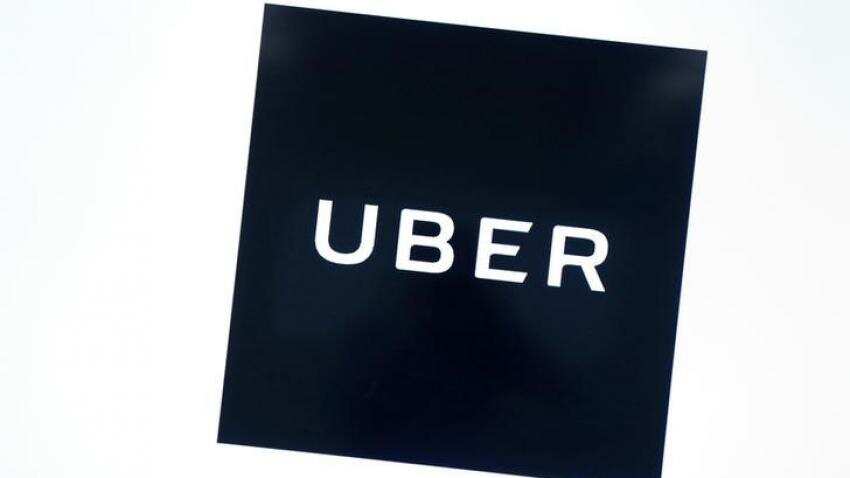Urban air mobility: Uber signs new pact with NASA on ''flying car''
NASA will use the latest in airspace management computer modeling and simulation to assess the impacts of small aircraft - from delivery drones to passenger aircraft with vertical take-off and landing capability - in crowded environments. This is NASA`s first such agreement specifically focused on modeling and simulation for the UAM operations.

In a bid to show its seriousness about taking its "flying car" concept off the ground, ride hailing company Uber has signed a second space act agreement with NASA. The pact aims to further explore concepts and technologies related to urban air mobility (UAM) to ensure a safe and efficient system for future air transportation in populated areas. Under this agreement, Uber will share its plans for implementing an urban aviation rideshare network, NASA said in a statement on Tuesday.
NASA will use the latest in airspace management computer modeling and simulation to assess the impacts of small aircraft - from delivery drones to passenger aircraft with vertical take-off and landing capability - in crowded environments. This is NASA`s first such agreement specifically focused on modeling and simulation for the UAM operations.
NASA`s definition of "urban air mobility" is a safe and efficient system for vehicles, piloted or not, to move passengers and cargo within a city. Uber`s first Space Act Agreement with NASA, which was signed in November 2017, was a general statement of an intent to collaborate, The Verge reported.
"NASA is excited to be partnering with Uber and others in the community to identify the key challenges facing the UAM market, and explore necessary research, development and testing requirements to address those challenges," Jaiwon Shin, Associate Administrator for NASA`s Aeronautics Research Mission Directorate, said in a statement.
"Urban air mobility could revolutionise the way people and cargo move in our cities and fundamentally change our lifestyle much like smart phones have," Shin said.
At its research facility at the Dallas Fort Worth (DFW) International Airport, NASA will use the data supplied by Uber to simulate a small passenger-carrying aircraft as it flies through DFW airspace during peak scheduled air traffic.
Analysis of these simulations will identify safety issues as these new aircraft take to the air in an already crowded air traffic control system.
"The new space act agreement broadening Uber`s partnership with NASA is exciting, because it allows us to combine Uber`s massive-scale engineering expertise with NASA`s decades of subject matter experience across multiple domains that are key to enabling urban air mobility, starting with airspace systems," said Jeff Holden, Uber`s Chief Product Officer.
Watch this Zee Business video
Uber believes that urban air transportation has the potential to alleviate transportation congestion on the ground and a network of small, electric aircraft that take off and land vertically (called VTOL aircraft for Vertical Take-off and Landing, and pronounced vee-tol), could enable rapid, reliable transportation between suburbs and cities and, ultimately, within cities.
Get Latest Business News, Stock Market Updates and Videos; Check your tax outgo through Income Tax Calculator and save money through our Personal Finance coverage. Check Business Breaking News Live on Zee Business Twitter and Facebook. Subscribe on YouTube.
RECOMMENDED STORIES

Fundamental picks by brokerage: These 3 largecap, 2 midcap stocks can give up to 28% return - Check targets

SBI Senior Citizen Latest FD Rates: What senior citizens can get on Rs 7 lakh, Rs 14 lakh, and Rs 21 lakh investments in Amrit Vrishti, 1-, 3-, and 5-year fixed deposits

Tamil Nadu Weather Alert: Chennai may receive heavy rains; IMD issues yellow & orange alerts in these districts

SIP+SWP: Rs 10,000 monthly SIP for 20 years, Rs 25 lakh lump sum investment, then Rs 2.15 lakh monthly income for 25 years; see expert calculations

Top 7 Mutual Funds With Highest Returns in 10 Years: Rs 10 lakh investment in No 1 scheme has turned into Rs 79,46,160 in 10 years

SIP vs PPF: How much corpus you can build in 15 years by investing Rs 1.5 lakh per year? Understand through calculations

Retirement Planning: Investment Rs 20 lakh, retirement corpus goal Rs 3.40 crore; know how you can achieve it
12:31 PM IST










 Uber Auto & Moto expected to drive Rs 36,000 crore in economic activity in India in 2024: Report
Uber Auto & Moto expected to drive Rs 36,000 crore in economic activity in India in 2024: Report Auto, taxi drivers begin 2-day strike in Delhi-NCR; demanding better compensation from cab aggregator services
Auto, taxi drivers begin 2-day strike in Delhi-NCR; demanding better compensation from cab aggregator services Uber Green electric cabs launched in Kolkata
Uber Green electric cabs launched in Kolkata Ride-hailing app Uber ceases operations across Pakistan
Ride-hailing app Uber ceases operations across Pakistan  Uber to pay $178 million in Australia taxi class action settlement
Uber to pay $178 million in Australia taxi class action settlement